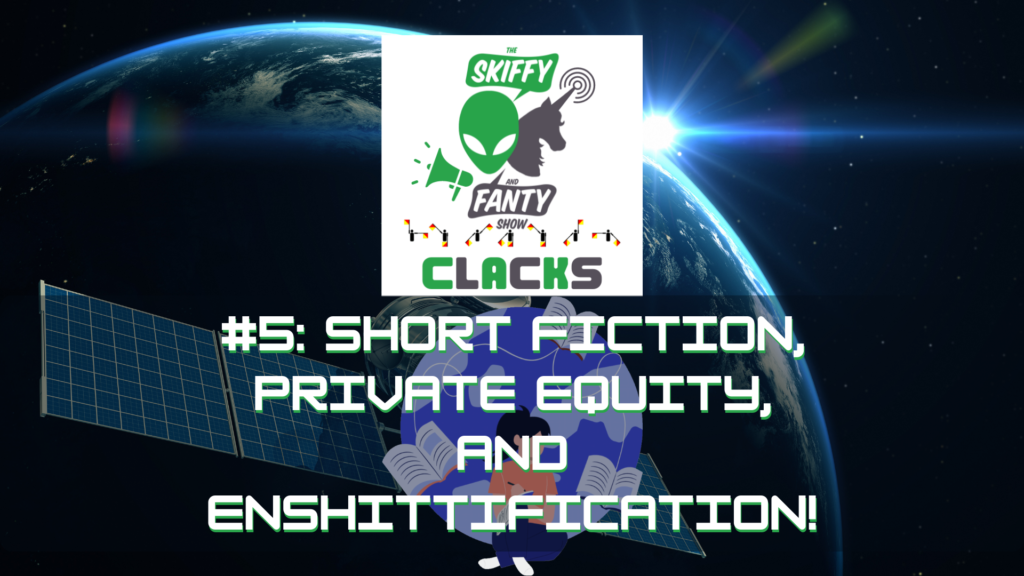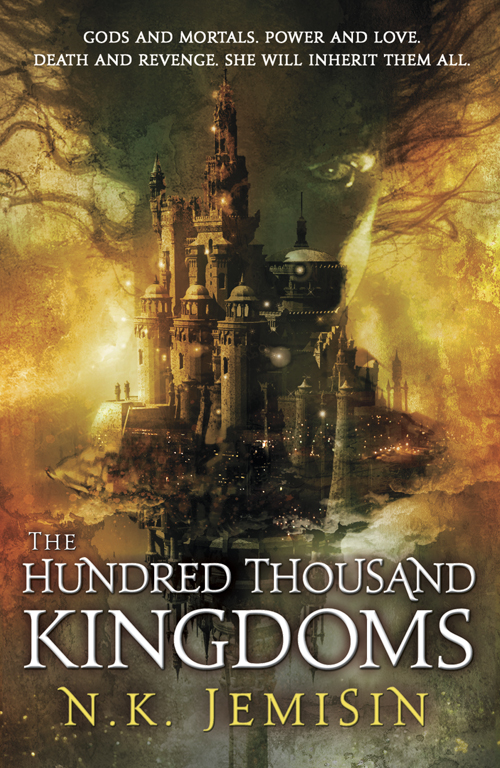752. S&F Clacks #5: Short Fiction, Private Equity, and Enshittification!

https://media.blubrry.com/skiffyandfanty/dts.podtrac.com/redirect.mp3/archive.org/download/sand-f-752-clacks-5/SandF_752_Clacks5.mp3Podcast: Play in new window | DownloadSubscribe: Apple Podcasts | Spotify | Android | Email | TuneIn | Deezer | RSSInternet shenanigans, bad companies, and library problems, oh my! Shaun Duke and Trish Matson join forces to discuss the encroaching influence of private equity on publishing and books, the future of libraries and problems that face them, the state of short fiction in SFF, and more! Thanks for listening. We hope you enjoy the episode!
My Superpower: Che Gilson
My Superpower is a regular guest column on the Skiffy and Fanty blog where authors and creators tell us about one weird skill, neat trick, highly specialized cybernetic upgrade, or other superpower they have, and how it helped (or hindered!) their creative process as they built their project. Today we welcome Che Gilson to talk about how the power of art relates to Carmine Rojas: Dog Fight. —————————————— I like to think of art as my super power. It’s not something that tons of authors can claim as their own (though there are plenty). But I was able to turn my super power into a book cover for my novella Carmine Rojas: Dog Fight.
Business Time: Direct-to-Consumer sales

Recently, HarperCollins announced that they’ve re-launched their site with a complete Direct-to-Consumer (DTC) store, selling physical and ebooks. Direct-to-Consumer sales are, for many companies, a great way to deal with disintermediation, that being, a disruption of the standard distribution chain. Companies like Amazon practice disintermediation, selling direct as retailers without needing field representatives and by surpassing/superceeding physical retail.
Business Time – Many Paths up the Mountain

This last weekend, I was at BaltiCon in Hunt Valley, MD. I had the pleasure of being on a number of business/business of writing panels, and I noticed something very cool that I wanted to loop back around to talk about. In one of the panels, I was the only traditionally-published author out of a group of five, but there was no animosity, no rancor, no posturing. It was five creatives who had all taken different paths to getting their work out into the world. It is my hope that we’re at a place where writers and creators looking to work in the SF/F prose field can approach the business with open eyes and a sense of freedom — of possibility. There are many paths up the mountain, and as many ways of having a career as there are authors (and considering how some authors reboot their careers, there may be more ways than there are creators). It’s not just Traditional and indie/self-publishing — there are a hundred gradations and combinations. Here are just a few:
Business Time: Self-publishing vendors and ‘royalties’

One of my pet peeves as a publishing professional: the author’s 70% share on KDP is not a ‘royalty.’ It’s the author-publisher’s share. Royalties are paid when rights are taken by a publisher and that content is then sold through vendors. KDP isn’t licensing rights and creating an end-product to sell, it’s just selling end-product. The use of the term ‘royalty’ muddles the reality of the relationship between an author and the vendor. Self-publishing is a solid path to publication now, but let’s be clear what KDP, Nook Press and other vendors are: vendors. When you’re a publisher, you come to terms with vendors – how they’ll sell your product, what discount they get (which then informs their margin), whether they can return the product, and so on. Signing a KDP/Nook Press/etc. deal is signing with a vendor. The thing is that KDP and other vendors that court self-publishers hold a vast amount of power compared to individual small business of self-publishers, so those vendors feel empowered to dictate terms, and are unlikely to negotiate those terms. These vendors depend on volume of sales across a range of agreements rather than on securing a distribution agreement with any specific author (though I imagine they might care more about signing up each new Hugh Howey or Sylvia Day book, or the like).
Business Time – Impatience, Rapid Release, and Saturation

This has been a busy week in publishing news. A lot of people are talking about authorearnings.com and/or the Digital Book World response to same. Lots of people are talking about that report, but since I’m not a statistician and I don’t have access to Amazon’s actual sales numbers, I’m going to talk about something I *do* know about, and that’s rapid release schedules in genre publishing. Prompted by this New York Times article, I wanted to talk about my observations about reader impatience, quick-to-market releases, and market saturation. Rapid release has been going on in genre publishing for quite some time. The romance category has numerous authors who write incredibly quickly, keeping their names fresh. In SF/F, we have our prolific authors as well. Seanan McGuire, Chuck Wendig, and more. Angry Robot and several other small/medium publishers have shorter production windows, meaning that the time from acquiring the book to releasing it is less, sometimes much less, than the 12-15 months you might see at other times.

